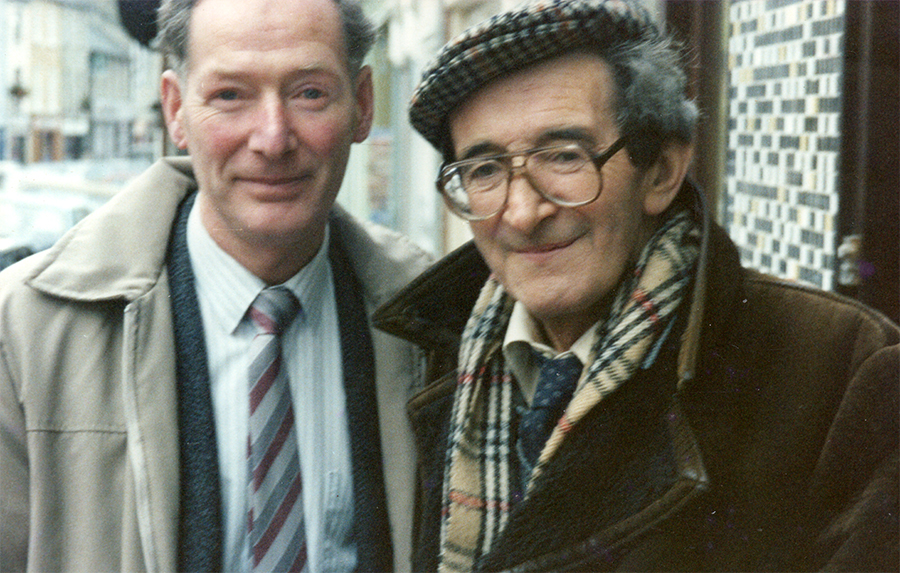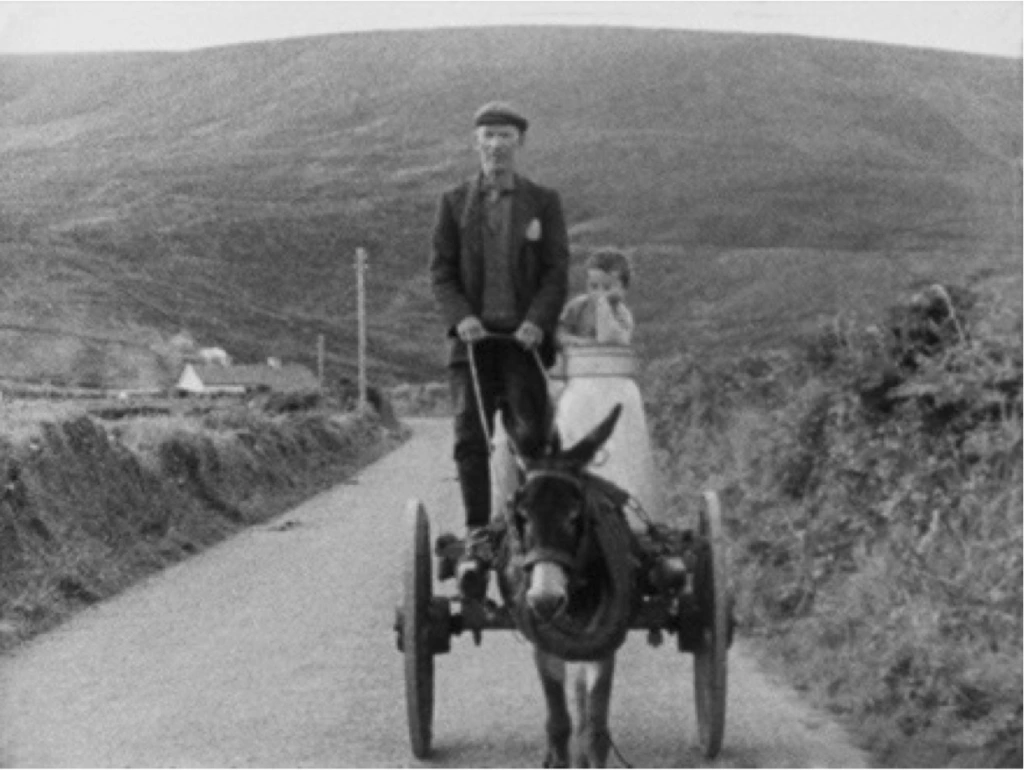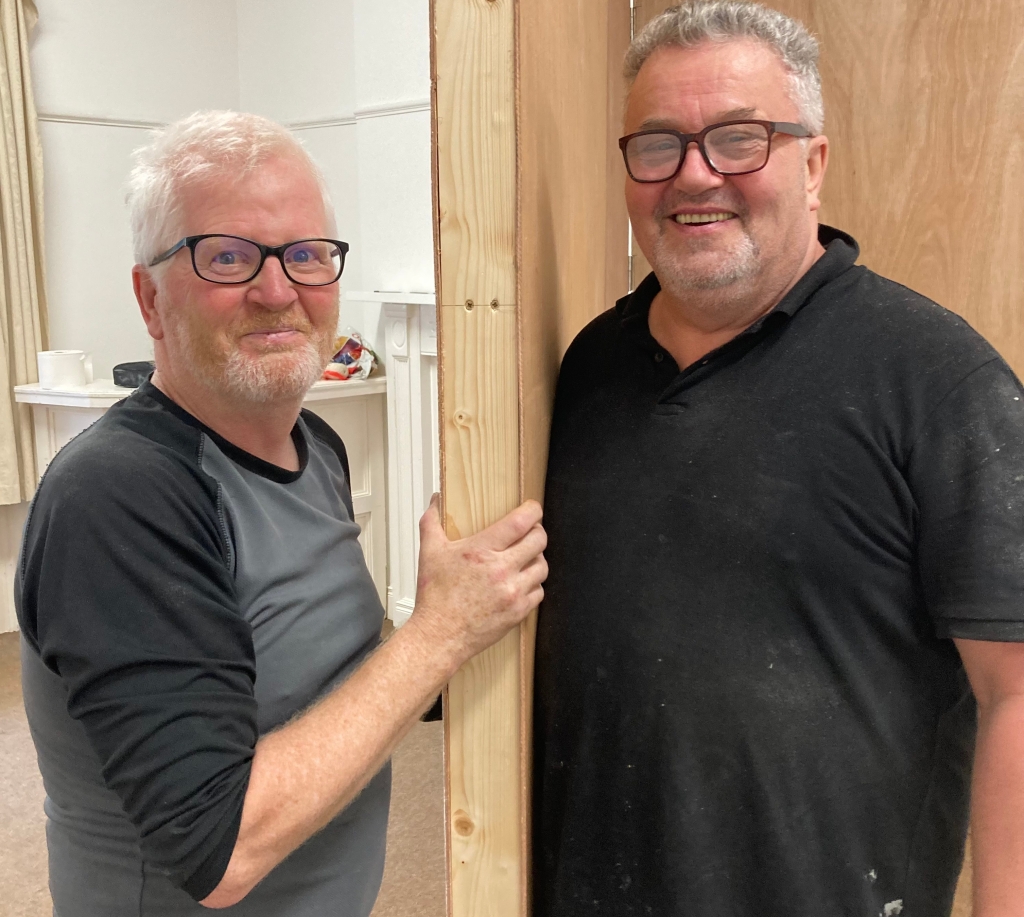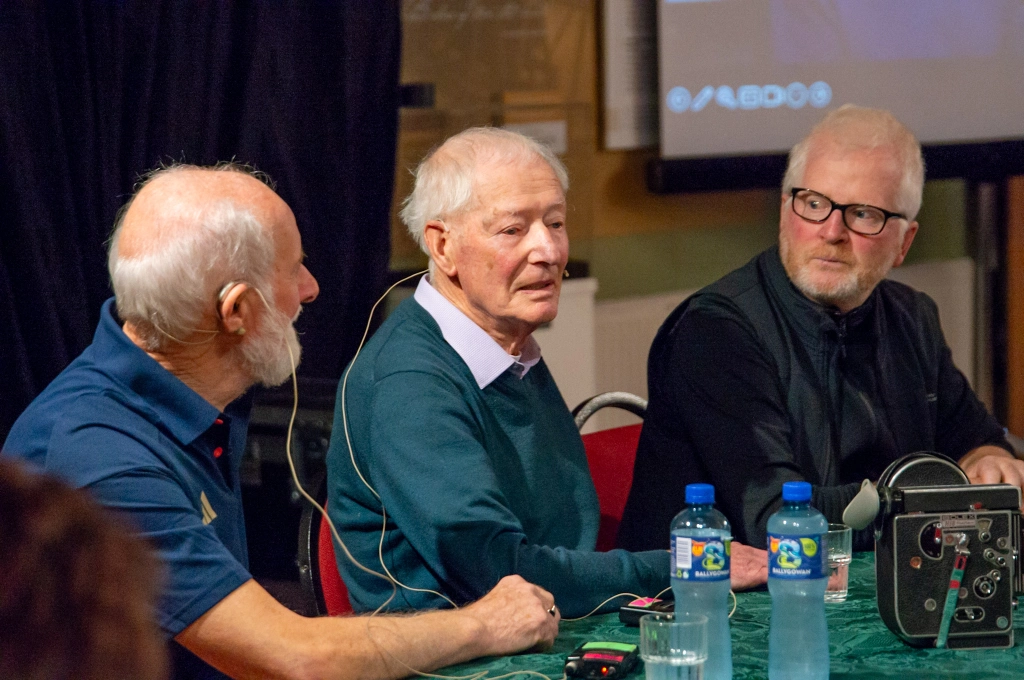John Lynch bought a 16mm Bolex cine camera in 1971 and began filming the end of a way of life in rural North Kerry from his vantage point in the creamery he managed in Cooraclarig. I met Lynch fifty years later and began recording his account of the start of his journey as an independent film maker. Along the way I met Michael Mulcahy, a sound engineer by trade who joined Lynch in 1973 and sealed their film making partnership by replacing the 8mm camera he bought in 1964 with a 16mm Bolex camera.
They documented social and cultural life in North Kerry over five decades and their choice of a 16mm Bolex signalled a professionalism that separates their film making from home movies made by amateurs. Their collected work constitutes a remarkable archive of independent, observational cinema that is unique in an Irish context.

John Lynch (photo Ciarán Walsh | curator.ie © 2023)

Michael Mulcahy (photo Ciarán Walsh | curator.ie © 2023)

John Lynch and Eamon Keane (photo Brian MacMahon | John Lynch © 2023)
My interest in their work is grounded in visual anthropology as defined by Paul Hockings, who edited Principles in Visual Anthropology in 1975. Hocking was involved in filming The Village in Dún Chaoin in 1967 and he presented it as a manifesto for observational cinema as a definitive form of visual anthropology. Mark Carty had a 16mm camera and, with three sound recordists, filmed life in the village as it happened over a summer weekend. They edited the results back to 70 minutes and released The Village in 1968 without commentary, leaving it up to the viewers to make up their own minds about they had observed. The lack of recorded dialogue and Keane’s soundtrack on The Way I Remember It – added in 1978 – sets the two films apart, although Keane’s soundtrack is less a commentary than a multilayered and mischievous soundtrack that adds a stream of folklore into the mix. The films have more in common however. The Village covers many of the same subjects that Lynch filmed around Listowel four years later and, although Lynch was an insider who was influenced by art house cinema, both were interested in exploring the process of change in traditional communities through the medium of film.
The fascinating thing about Lynch and Mulcahy is that they continued to film the same community over five decades. Equally remarkable is the collection of film and sound equipment that they collected. They have kept the Bolex cameras they started out with – they are still in working order – but modernised their operation as film yielded to video and video entered the digital age. Their studios record those changes in a remarkable collection of things as much as films. That triggered a search for a repository for a collection of observational cinema and film making equipment that may have been local in origin but is now of national significance in terms of the history of cinema in Ireland.
Cara Trant, Executive Director of Kerry Writers’ Museum in Listowel came on board in 2023. She secured funding for a preliminary curatorial project from the government department responsible for the arts, heritage and media, which operates the Regional Museums Exhibition Scheme. I had referred to Lynch and Mulcahy in conversation as the ‘Bolex’ boys and that became the title of the project. Julien Dorgere, the Super8 Specialist in Galway, began work on the digital restoration of the film in September alongside work on on converting a gallery in the museum into a multi media space that incorporated a mini cinema.
Photos of International Storytelling Festival are © Noel Sweeney/sweeneynmedia
Lynch and Mulcahy showed a preview of the restored version of The Way I Remember It in September as part of the International Storytelling Festival in Kerry Writer’s Museum and a large crowd attended, including a number of young film makers who were interested in independent documentary making and analogue cinema. The fully restored films will be premiered at the opening ofThe Bolex Boys in Kerry Writers’ Museum on 19 October.
in partnership with
and supported by














